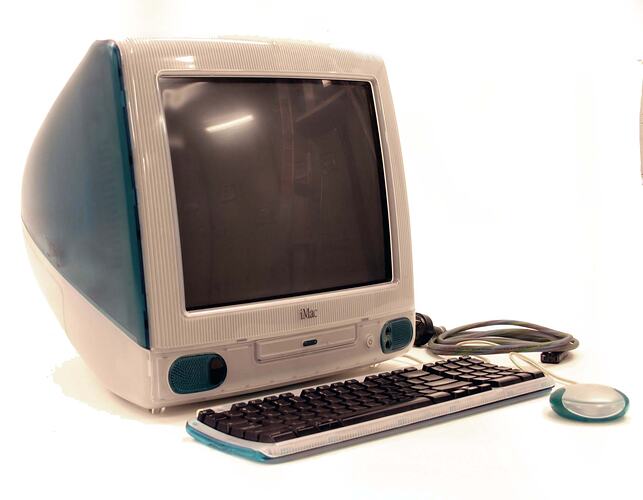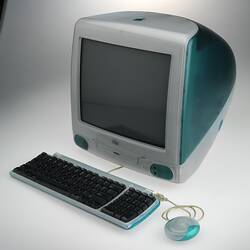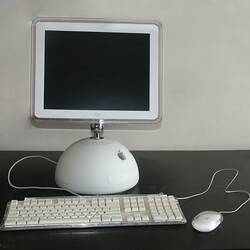The Apple Company was founded by Steve Jobs and Steve Wozniak ('the two Steves'). Jobs left Apple in 1985 but returned as CEO in 1996.
The return of Steve Jobs to Apple, and his rise to interim CEO in 1998, saw a radical shift in Apple's design and product philosophy. Jobs did away with numerous Macintosh models, and put a stop to non-Apple Macintosh clones.
Jobs' stance on design, which also impacted his product philosophy, was one of useability via simplicity. Rather than current engineering standards influencing design, Jobs held the belief that design should drive engineering, incorporating new methods and materials to best make the user experience one of 'It just works'.
On his return to Apple, Jobs discovered an English designer in Apple's employ, Jonathan Ive, and was impressed with Ive's ideas and prior designs. In 1998 Apple returned to its original Macintosh roots with the all-in-one iMac, which used new materials, and broke new ground by doing away with all legacy connections, and only using USB. The Bondi Blue iMac told the world computers no longer needed to be beige in colour, and personal computers could be an emotional and exciting experience.
Several more models quickly followed, and the iMac range became not just an instant computer hit, resurrecting Apple's place as a computer maker, but its design and use of translucent 'fruity' colours set a trend for industrial design for many other consumer products.
With the advent of cheaper LCD screens, rather than the CRT screens principally employed in consumer-grade computers, Apple set out to incorporate these flat screens in a Mac of profoundly unusual appearance.
The Sunflower iMac was the product of long discussions between Jobs and Ive on industrial design. Incorporating an exquisitely engineered articulated arm to support the screen, the Sunflower (also referred to as the lampshade iMac since it bore a strong resemblance to the Pixar logo) housed its electronics on circular circuit boards within a white hemisphere base of substantial heft. The screen could move in a circular arc, as well as pivot up and down, so that it was exceedingly simple for any user to set the right height and viewing angle.
The advertisements for the iMac G4 also gave it anthropomorphic qualities, much like the Pixar lampshade which is shown before Pixar movies. It jumped around, poked out its 'tongue' (in actual fact its sliding CD tray) at passersby looking at it in showroom windows, and had much playful appeal for children and adults alike. While many in the beige PC world saw it as another Apple toy computer, users enjoyed its simplicity of design.
Its original 17" LCD screen was also used to create the world's first 17" laptop, the Powerbook G4, released in 2003. The Sunflower iMac was relatively short-lived as Apple prepared to unveil G5 and later Intel-powered Macs, and it gave way to the all-in-one G5 iMac which was all-screen, with the electronics hidden in the back as part of the screen assembly.
More Information
-
Keywords
-
Authors
-
Contributors
-
Article types


